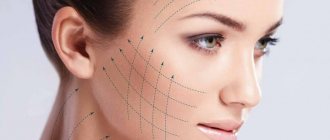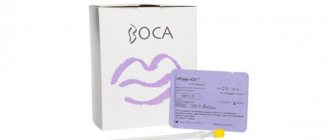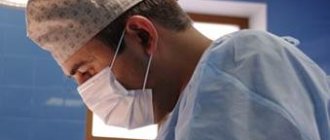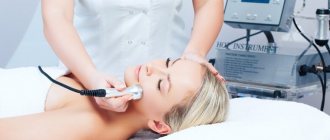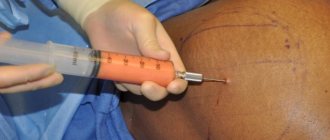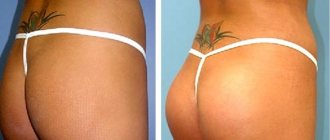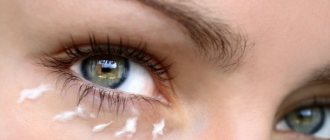Not everyone knows what “buttock filament lifting” is, while this minimally invasive procedure is finding its fans all over the world. It allows you to tighten your buttocks and increase their volume. Unlike full-fledged plastic surgery, filament lifting does not achieve a long-term effect, but it has its advantages. They are that she:
- is carried out without the use of general anesthesia, eliminating the risk of complications and restrictions on contraindications;
- does not involve large incisions (and therefore scars);
- stimulates metabolism in the tissues of the buttocks, rejuvenating them;
- does not require long recovery.
You can see the results of a buttock lift with threads in the before and after photos on this page.
The essence of the procedure
Thread reinforcement began to be made in the middle of the last century.
Then thin gold threads were used and they were installed only on the face. However, with the development of modern self-absorbable materials, their scope has expanded significantly, and they are now used to correct any part of the body. When administered subcutaneously, mesothreads form an additional elastic frame that supports soft tissues. Over time, a shell of connective tissue forms around them, which prolongs the result and increases the elasticity of the skin. Thus, she tightens up and her condition noticeably improves.
When she's useless
In recent years, the procedure has begun to be actively used to correct the buttocks. However, it does not always achieve good results. It all depends on the condition of the muscles and skin.
The problem is that the elastic thread frame cannot support large volumes of soft tissue. Moreover, excessive tension can lead to the threads breaking and even coming out. Therefore, reinforcement of the buttocks is not performed:
- with significant excess weight;
- loss of muscle tone;
- severe drooping of the buttocks;
- large excess skin;
- patients over 60 years of age.
The procedure is not suitable for those who are actively involved in sports. After it, you will have to give up heavy physical activity for at least 3-4 months, and then constantly ensure that you do not accidentally injure your buttocks.
Advantages and disadvantages
However, if the skin and gluteal muscles are still in good condition, then thread lifting has a number of advantages over other lifting methods:
- does not leave visual marks - the threads are installed through punctures that heal in just a few days;
- does not require the use of anesthesia - local anesthesia is sufficient;
- short rehabilitation – complete recovery takes no more than 4 weeks, and active recovery – up to 7-10 days;
- immediate effect - it can be seen immediately after the procedure, and within a month it only intensifies;
- skin improvement - threads stimulate the production of collagen and elastin, and also increase capillary blood flow.
If necessary, the procedure can be repeated after 2-3 years, and with proper skin care and exercise, the effect can actually be extended up to 5 years.
This method has few disadvantages. The main thing is its rather high cost, since such a large area requires at least 10-14 threads, the price for each starts from 1000 rubles. On too thin and loose skin after lifting, strands may appear - reddish marks reminiscent of stretch marks.
Every woman strives for the ideal beauty of her body. Beautiful buttocks are a desirable goal for many women, but not everyone can boast of their natural beauty. Women spend their days in fitness clubs, go on all kinds of diets, but all in vain. It is sometimes impossible to achieve ideal buttock shapes, which is due to insufficient development of the subcutaneous fat layer and other constitutional characteristics of the body. In this case, you should turn to plastic surgery. A butt lift will allow you to form a voluminous, elastic shape of the gluteal muscles, which will emphasize your relief and make your body more attractive. Nowadays, cosmetic surgery has many butt lift procedures that can benefit any woman. A butt lift does not involve the installation of implants, since only sagging skin that appears as a result of age-related changes or as a result of severe weight loss is removed.
Today, the following types of buttock lift are distinguished: upper, lower, lateral (lateral), middle (medial), which are determined by the localization of the problem area.
The technique is selected depending on the type of cosmetic defect - drooping buttocks, loose skin, lack of symmetry of the buttock folds, long buttocks. The task of the plastic surgeon is to remove areas of excess skin, as a result of which the relief of the buttocks and outer thighs is improved and emphasized.
Butt lift: Butt lift
Butt lift is a type of butt lift that makes the buttocks convex, voluminous, and the body becomes more attractive. This is achieved by using our own fabrics. It is used when patients wish to eliminate age-related changes in the buttock muscles and skin - sagging, sagging, or to replenish the volume of the buttocks as a result of severe weight loss. This procedure has no age restrictions. Procedure of the operation: an incision is made in the upper part of the buttocks in a horizontal direction, after separating the tissues, the skin is pulled up, and all excess is removed. Next, stitches are applied and the operation ends with the application of an aseptic dressing.
As a result, this buttock lift allows you to restore rounded shapes and eliminate sagging skin in the area of the lower fold. The cosmetic effect lasts for 6-8 years or more, until age-related changes appear again. The buttock lift procedure returns the former roundness, elasticity, emphasizes the relief of the gluteal muscles and makes your body more attractive, which is good news. The advantage of this operation is that it does not require implants or other invasive procedures. This butt lift can be combined with liposuction.
Butt lift: Lipofilling
This method corrects the shape and volume of the buttocks by introducing your own fatty tissue into the space between the gluteal muscles. The operation is performed in two stages. First, the plastic surgeon removes excess fatty tissue from problem areas and then injects it into the area of the buttocks that requires correction.
Before the lipofilling procedure itself, the fat undergoes special purification. The result is an emphasized relief of the gluteal area. The disadvantage of this method is the short duration of the cosmetic effect (2-3 months), since the injected fat is absorbed over time.
Rehabilitation of patients after procedures
lifting and lipofilling of the buttocks
The duration and course of rehabilitation depends on the buttock lift technique, the type of plastic surgery of the gluteal muscles (gluteoplasty), the presence of complications in the postoperative period, and the reactive abilities of the body tissues. After the implants are inserted, the patient must wear compression stockings for two months, which helps to avoid suture dehiscence, thromboembolism and other complications in the postoperative period. For the first few days, it is forbidden to sit on your buttocks, and sleep is possible only in a prone position on your stomach. Physical activity is contraindicated for 2 weeks or more in individual cases. The final result is assessed after 2-3 months. Gluteolifting (buttock lift) is not an indication for wearing compression garments during the rehabilitation period, unless it was preceded by liposuction. Regular exercise is allowed after a week; water procedures are possible only on days 4-6 after surgery. The result is assessed after 2 months. Lipofilling is a minimally invasive procedure, so there are no special requirements for the rehabilitation period.
Possible complications
During the operation, bleeding may occur, a hematoma or swelling may form, but these complications arise with any operation. Timely adoption of measures and a thorough examination of the patient before surgery, consultation with related specialists, allows one to prevent and resolve these problems. To reduce the risk of infection, a prophylactic course of antibiotic therapy is carried out. Loss of skin sensitivity in the suture area is a short-term phenomenon and goes away on its own. Overgrowth of connective tissue, which leads to the formation of rough scars, is quite rare, but it is impossible to predict and reverse it. It should be noted that all cases of dissatisfaction with the final result occur when the doctor did not provide complete information to the patient about the nature of the operation, the final result and possible complications that may occur, or in cases where the patient did not comply with the surgeon’s instructions in the postoperative period.
Butt lift: Filamentolifting
Filament lifting is a popular butt lift procedure. With minimal surgical intervention, this technique allows you to achieve a good cosmetic effect that lasts for a long time.
A buttock lift is performed by reinforcing (injecting under the skin) the buttocks with biothreads. Regardless of the type of thread, the principle of their introduction is the same: small incisions are made (3...10 mm), through which the threads are fixed in the subcutaneous and interfascial layers of the gluteal muscles, which gives a tension effect that can be adjusted by both the doctor and the patient. The threads contain various polymers and silicone, which does not allow them to instantly dissolve. The buttocks remain in this tense state for an average of 2-3 years, after which the tension weakens, but the procedure can be repeated again.
Filament lifting is often performed in a plastic surgery clinic using local anesthesia. The duration of the procedure is about 40 minutes. Special threads (for example, Aptos) are inserted into sagging tissues, fixed and tensioned. It is worth emphasizing that the degree of tension can be controlled by the patient herself. The insertion of threads is carried out with special tools, leaving no traces of skin puncture. The tension of the threads allows you to achieve an immediate effect of lifting the buttocks. After the procedure, patients can admire their butt, which will be no worse than Jennifer Lopez's.
After 2-3 years, the thread dissolves, the effect can last from 3 to 10 years, but everything will depend on the patient herself. In young patients, the cosmetic effect lasts longer due to the good tissue reactivity. If the tension effect has weakened, then do not despair. The procedure can be repeated again - it is completely harmless, does not require extensive surgical intervention, does not cause serious consequences and helps to acquire excellent shape.
Preparation for filament lifting and possible consequences
Preparation for the operation is carried out according to a standard procedure, but it is worth noting that despite the operation being performed on an outpatient basis under local anesthesia, some patients reported pain for several months after the operation, which is most likely due to individual characteristics. Patients are discharged on the same day or remain under observation in the hospital, if necessary. Compression hosiery is necessary during the rehabilitation period. Sitting and lying down are contraindicated for two weeks or more, depending on the situation. The seams are tightened without a trace.
Currently, in Russia this procedure is rarely used and not in all plastic surgery clinics. Many experts consider the procedure to be ineffective, since it is impossible to fix the buttocks due to their great mobility.
Contraindications: acute respiratory diseases of a viral nature, blood clotting diseases, infections, allergic reactions to substances included in the threads.
Application of stem cells
The technique of transplanting adipose tissue cells has been studied and used in plastic surgery for a long time, but the transplantation of “mature” stem cells (stem cells of an adult organism) and adipocytes from the lower abdomen, and then their subsequent activation due to growth factors, has become a real breakthrough in the field of cellular technologies. These growth factors stimulate the division of skin cells and adipose tissue, which leads to an increase in their number and, accordingly, tissue rejuvenation. It is worth noting that growth factors also affect the transplanted “mature” stem cells from the lower abdomen. The lasting cosmetic effect is due to the fact that “mature” stem cells produce special substances like hormones that rejuvenate the skin and improve the condition of soft tissues. The procedure is performed under local anesthesia and lasts for 1 hour. Full recovery occurs in a week, as a result of which the buttocks will acquire a rounded and elastic shape, beautifully emphasizing the relief of the body. The method of stem cell transplantation is still in the stage of clinical research, but discussions for or against the use of stem cells do not subside among plastic surgeons and cosmetologists. At the moment, this technique is not approved for use in Russia.
Types of threads
Modern threads made of organic and inorganic materials are used to lift the buttocks. The most common types are:
- "Silhouette Elevator". Long thin polypropylene threads reinforced with lactic acid knots. They gradually dissolve and are replaced by sections of connective tissue, which prevents the thread from moving from the installation site. The effect of the procedure lasts at least 2-3 years.
- "Aptos". The threads of this manufacturer have different configurations. To reinforce the buttocks, double spirals or smooth threads with knots and notches are usually used. The surgeon decides which ones are best, depending on the volume of fat, the condition of the muscles and skin.
- Mesothreads. The most inexpensive, but not very suitable for correcting the buttocks. They are made of polypropylene and are very smooth. Therefore, they cannot be firmly fixed and may become dislodged over time. But they are in demand due to their affordable price (from 750 rubles) and effectiveness in the fight against cellulite.
- Polypropylene. Threads with micro-notches made of synthetic high-tech fiber, thanks to which they can be tightened and fixed in the desired position. An additional plus is their reasonable price, which is why they have become super popular. In addition, they are hypoallergenic and rarely provoke allergies or rejection.
It is better to entrust the choice of threads to a specialist, since he knows all the features of each type and will make the right decision, focusing on the volume of the buttocks and the condition of the skin.
How is the procedure performed?
Depending on the volume, filament lifting lasts from thirty to sixty minutes and involves the use of local anesthesia. The threads are introduced through small incisions or punctures in the skin using cannulas or needles. After the threads are inserted, the specialist tensions them and trims the ends. During the procedure, the patient has the opportunity to choose the desired degree of thread tension. In order to reduce tissue swelling and eliminate the possibility of bruising after the procedure, cold must be applied to the places where the threads are inserted.
Preparation and Execution
Installing threads on the buttocks is easy. There is no large accumulation of nerve endings and blood vessels in this area, so the risks of serious complications are minimal. The entire procedure rarely takes more than one hour and does not require lengthy preliminary preparation.
Preliminary consultation
During the initial examination, the doctor assesses the degree of changes in the skin, the volume of fat deposits and the general condition of the body. He carefully interviews the patient to ensure there are no contraindications. If there is no doubt, a date is set for the procedure.
To make rehabilitation go faster, it is advisable to quit smoking and stop drinking alcohol two weeks before. During this same period, you must completely stop taking anticoagulants to eliminate the risk of bleeding and reduce the number of bruises.
Execution technique
Immediately before lifting, markings are made on the patient’s buttocks, which show the insertion points and direction of the threads. This is necessary, since in a lying position the muscles take on a different shape and without marks it is difficult for the doctor to navigate.
Then the working area is treated with an antiseptic and injected with sensitivity-reducing drugs. Small punctures are made at pre-designated points, through which thin metal cannulas are inserted under the skin.
The threads are pulled through them, positioned along the muscle fibers, the soft tissues are fixed in the desired position, the ends are secured and the excess is cut off. The puncture sites are sealed with an antiseptic plaster. 20-30 minutes after the procedure, the patient is allowed to go home.
Rehabilitation
In the first few days after a thread lift, swelling and slight redness of the skin are observed. Minor pain may occur in the places where the threads are attached. They usually go away within 3-4 days.
You can go to work within a day after the procedure. But for at least two weeks you will have to comply with the following restrictions:
- do not sit for too long without a break;
- do not play sports;
- do not visit the sauna and solarium;
- do not swim in the pool or open water;
- don't steam in the bathroom.
To help bruises and swelling go away faster, you can apply cold, dry compresses to your buttocks in the first days. The puncture sites should be treated with an antiseptic at least twice a day until complete healing.
To enhance the effect, you need to wear high-quality compression garments for at least a month. The use of a good anti-cellulite or lifting cream can prolong the result.
Filament lifting of the buttocks
We know a lot about thread lifts for the face and neck, but what about the buttocks? In what cases will threads help maintain appetizing shapes, and for how long? Alternatively, filament lifting . This is a fairly minimally invasive buttock lift procedure using threads, which can in many cases replace plastic surgery, although its effect is temporary. This technique is often identified with the Brazilian butt lift, which, however, is not entirely correct: the latter uses not threads, but the patient’s own fat to correct the shape of the gluteal muscles.
Buttock lift with threads - filament lifting 7646
Filament lifting of the buttocks: will not always help everyone
So, for some good reason, you decided that fitness won’t help you tighten up your buttocks, buttock plastic surgery is still too drastic an option, but still, it really wouldn’t hurt to tighten up the sagging areas on your buttocks... Well, your choice is filamentlifting!
Many people would like to lift their buttocks - the process of drooping (ptosis) of the skin and soft tissues of the buttocks is inevitable, unless you are constantly and seriously involved in athletics or bodybuilding. It is divided into two stages:
- Preptosis: when a fold of skin begins to form at the border of the buttock and thigh;
- Ptosis itself: a fold is formed and the tissue of the buttocks begins to hang over the skin fold.
Unfortunately, filament lifting is effective only in the case of the first stage, that is, preptosis: the threads in this case allow you to slightly lift the skin and model, “group” the subcutaneous fatty tissue. This helps to create volume in the upper part of the buttocks and, most importantly, prevents further sagging of the tissue. At the stage of ptosis, filament lifting will provide an effect, but only temporary. It is important that the risk of complications increases, such as cutting through threads and the formation of strands in the “firmware” areas.
In addition to the problem of sagging, filament lifting also solves the following problems: flat or asymmetrical buttocks; too small disproportionate buttocks; changes in the shape of the gluteal muscles after massive weight loss.
Butt lift: suture material options
Now is the time to talk about the options for threads that are used to lift the buttocks.
- Absorbable sutures made of polylactic acid. Polylactic acid gradually degrades in the tissues of the dermis and subcutaneous fat with the subsequent formation of lactic acid. Lactic acid, in turn, stimulates tissue metabolism and also activates the synthesis of collagen and elastin. In addition to the revitalizing effect, threads made of polylactic acid act mechanically: they have notches for fixing tissues in a given position. Ideally, after the thread has completely dissolved, a matrix will remain in its place, a framework consisting of new collagen and elastin, which will prevent recurrent ptosis - but this rosy scenario is only possible at a young age. However, if you consider that threads made of polylactic acid dissolve within 6-9 months, then you can be sure that they will provide a sufficiently long-lasting lifting of the buttocks in any case.
- Polypropylene threads - they have microscopic notches that allow you to securely fix the tissue in a certain position. Polypropylene threads do not dissolve. As a rule, they do not cause hypersensitivity or rejection reactions.
- Mesothreads. If the first two types are used to correct sagging skin and underlying tissues of the buttocks, then mesothread lifting is used only to prevent ptosis. However, mesothreads are the choice of those who would like to preserve their shape for as long as possible. The fact is that on the one hand there are no notches on them, therefore mesothreads cannot provide a significant degree of tissue tension and, accordingly, lifting. Mesothreads consist of polydioxanone and are coated on top with polyglycolic acid. However, on the other hand, during the degradation process, mesothreads stimulate the production of collagen and elastin in the skin and form a frame that will support the skin in a certain position.
Filament lifting procedure
A buttock lift with threads can take from 30 to 60 minutes. To perform filament lifting, local anesthesia is used. The place where the threads are inserted is treated with antiseptics, and then the threads are inserted using needles or cannulas (through punctures of different diameters) around the circumference of the buttocks. After all the threads have been inserted, they are tensioned, and their ends are secured and trimmed.
Buttock lift with threads 9064
In some cases, you can observe the process of tightening the threads and adjust the degree of their tension and, accordingly, the appearance of the buttocks.
Filament lifting of the buttocks 8155
After removing the cannulas and cutting the ends of the threads, the puncture sites are treated with an antiseptic and sealed with adhesive tape. It is imperative that cold is applied to the site where the threads are inserted for about an hour to reduce tissue swelling and to prevent bruising.
Rehabilitation after filament lifting
It is very important to avoid cutting through the threads and other complications of filament lifting, for example, “reformatting” of the dermal tissue and subcutaneous fat, which ends in the formation of ugly bumps and depressions along the course of the threads. It is also necessary to reduce swelling of the skin and prevent its increase. It is equally important to prevent infection. So the recovery period requires compliance with a number of restrictions of at least 20 days: this is how long it takes to form a capsule of connective tissue around the threads. So it follows:
- treat puncture sites with antiseptics, and in the first days you can apply cold to the buttocks;
- if you are concerned about pain, you can take analgesics as needed.
- reduce physical activity, avoid wide-range movements in the hip joints, as well as movements with significant muscle effort (sharp lifting of something heavy, for example);
- do not massage the tightening area;
- Any thermal procedures are not recommended, not only visiting the sauna and solarium, but also taking a hot bath.
The entire recovery period can take up to one and a half months.
Benefits of filament lifting
If we compare thread lifting with buttock surgery:
- No postoperative scars: when inserting threads, there is no need to make large incisions, so there are no scars or, especially, scars left.
- No anesthesia required. The procedure is minimally invasive, so there is no need to resort to general anesthesia.
- Short rehabilitation period. When inserting threads, tissue damage is minimal, so recovery after the procedure is quick.
- Stimulating effect on the dermis at the treatment site. Blood flow and metabolism increase at the injection site. If threads made of polylactic acid or mesothread are used, the processes of tissue rejuvenation at the injection site are additionally stimulated.
Disadvantages and possible complications of filament lifting
The main disadvantage is the transient effect: usually the result of filament lifting lasts about a year. In this case, the tightened volume decreases gradually, returning to its original level. Many specialists who are responsible for the long-term results of butt lifts refuse to perform butt lift with threads altogether, as they consider this procedure to be a short-lived and controversial solution to the problem. Their arguments are quite reasonable: the buttocks are too large and strong muscles to be supported by “threads”. The following complications can spoil the impression of the procedure:
- The formation of strands - such a picture greatly spoils the appearance of the “fifth point”. It usually occurs with the problem of excessively loose tissue of the buttocks. In those places where the threads pass, the tissues are tightened. And in the spaces between the threads they become bulging.
- Thread cutting. In this case, the threads go deeper into the tissue than they were introduced, and the tissues pulled up by the threads are lowered.
- Thread contouring. In this case, the threads move to more superficial layers of tissue and begin to be felt or visually visible under the skin. Unlike teething, this complication is very rare.
- Development of infection in the area of insertion of threads. This complication develops when the conditions of the procedure are violated and requires removal of the suture material in order to avoid inflammation of the subcutaneous fatty tissue and subsequent scar formation.
It is impossible to predict the risk of development of such complications - a lot depends on the doctor. Also, you should not rely too much on advertising promises - they say that the thread lift process is absolutely safe and this method has practically no contraindications. They exist, just not as strict as in the case of buttock surgery.
- Pregnancy and lactation;
- Risk of formation of keloid or hypertrophic skin scars in response to injury;
- Infectious (including colds) and autoimmune diseases;
- Oncological diseases;
- Blood diseases, disorders of blood clotting processes;
- Diseases of the skin and subcutaneous tissue of any location;
- Diabetes.
- Allergy to thread material;
If you decide to tighten your buttocks using this method, choose a specialist very carefully, study reviews of his operations, recommendations and portfolio. Additionally, surgical techniques for a Brazilian butt lift vary widely among plastic surgeons. The technique your doctor uses will influence not only the result, i.e. the shape of the buttocks, but also how long it will last.
Possible complications
With a well-performed procedure, complications and side effects after it are extremely rare and usually the culprits are the patients themselves, who did not follow medical recommendations.
Most often they encounter the following problems:
- A break or cutting through the threads occurs when they are improperly fastened, hit or when there is strong pressure on the buttocks.
- Contouring – occurs in people with a tendency to form keloid scars or when threads are installed incorrectly.
- Distortion of the relief - soft tissues rise in the area where the threads are installed, forming depressions between them.
- Infection of wounds is a consequence of their improper or insufficiently thorough treatment.
- Thread rejection is almost impossible to predict, but in this case they will have to be removed.
Most serious complications are the result of medical errors and can only be corrected by repeated correction.
Contraindications
Although a thread lift is not a full-fledged operation, it is associated with certain risks and has a number of contraindications. Reinforcement of the buttocks is not performed when:
- pregnancy and breastfeeding;
- tendency to form scars;
- blood clotting disorders;
- active viruses and infections;
- skin diseases, psoriasis;
- hypertension and diabetes mellitus;
- exacerbation of chronic diseases;
- oncology and autoimmune diseases.
Thread lifts are not performed on patients under 18 and over 55 years of age. The procedure is not prescribed during menstruation or a few days before and after it.
Why does the shape of the buttocks improve?
The administration of the drug literally changes the muscle tone of the gluteal region. With this method, the upper part of the gluteal muscle becomes stronger and the lower part weaker. It is due to this that the muscle rises up and the subgluteal fold goes away.
This wonderful procedure will help you achieve the glute shape you've been dreaming of!
Before and after
Prices
- Buttock lift with botulinum toxin (injection method)
- 100 units
30 000 ₽
- 150 units
45 000 ₽
- 200 units
60 000 ₽
How is the procedure done?
The drug is administered through several intramuscular injections. Injection marks disappear within 20 minutes. The result comes in 14 days. But the final result can be assessed only after a month. On day 20, you can evaluate the effectiveness and, if necessary, make corrections. Depending on the number of units of the administered drug and the characteristics of the patient, the effect of the procedure lasts from 4 months to 1 year
.
